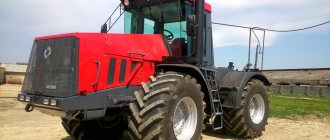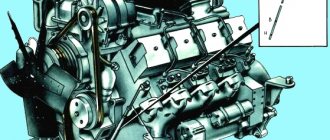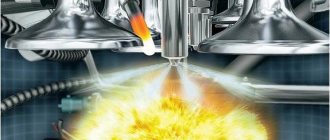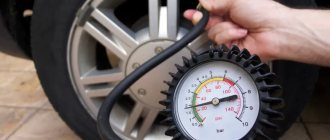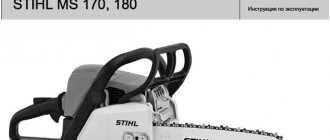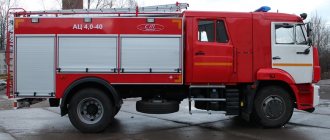Impact of a faulty turbine on the engine
Many people believe that a compact unit in the form of a turbine, if it breaks down, will not have a big impact on the operation of the engine; in fact, this is not the case.
Often the cause of turbine failure is considered to be low oil pressure or poor oil quality.
- A drop in pressure is often caused by excessive contamination of the oil filter or its poor quality, as well as due to washing it for five minutes.
- Taking into account the high turbine speeds, as well as the constant influence of high temperatures, which are normal operating conditions, even a small and short-term decrease in oil pressure can lead to failure of the turbine axial bearing.
With significant wear, the radial clearance increases, and such play causes disruption and breakage of the seals. The quality of lubrication of turbine components is highly dependent on the engine oil pump. Even short-term operation of the device in this form will not provide lubrication to the engine. A running engine without oil will quickly fail.
Symptoms and causes of disorders
The smoke that appears in the exhaust pipe soon comes into view. Along with this, a pronounced pungent odor appears, which is felt as you move.
Here are other manifestations and where to look for the root of the breakdown:
- Black smoke. This manifestation is caused by the combustion of fuel in the turbine. The difficulty arises due to a lack of air mixture in the fuel system. It is important to pay attention to: the tightness of all pipes, the ECU, the engine, the air filter (often the malfunction is rooted in it), the functionality of the fuel system;
- Milky whitish color. This often occurs due to a clogged oil drain line;
- Sky gray shade. This is where the oil enters the engine. Most likely, the root of the problem should be found in the leak. It is necessary to inspect all connections, and the reason is a breakdown of the turbine or engine;
- Increased oil consumption, oil leaks. Difficulties with the oil line may be accompanied by a decrease in air flow to the mixture. This also indicates wear and charring of the channels or axle casing;
- Decreased productivity. Appears due to lack of air. It is worth taking a good look at all the parts of the air transmission system.
What to check for yourself
Before contacting a service station, in some cases, you can do basic diagnostics of the car yourself.
- If smoke appears, then, regardless of the color, you need to check the air filter and the connections of the pipes. If the seal is lost, then you need to remove and replace the filter.
- How worn out the turbine is can be determined by lightly turning the rotor - there is little play, which means everything is fine, and when, while turning, the rotor even touches the housing a little, then the turbine will need to be taken in for repair.
- Inspect the turbocharger. To do this, open the hood, start the engine and clamp the tube that runs from the turbocharger to the intake manifold. An assistant should press the gas for 2-3 seconds and when the tube swells from pressure, then everything is in order, but when it is sluggish, the turbine needs repair.
- The turbine is visible. There should be no oil or other stains on its body. If you disconnect a tube that was previously pinched and oil traces appear, the turbine probably needs to be replaced.
Unnatural sounds
First you need to open the hood slightly and recognize where the sound may be coming from. When noises are heard from the turbine, then it is necessary to inspect the axial rotor for chips and free rotation.
The scratching effect means distortion and cracking. A whistling sound indicates air leaks.
- Sometimes this happens when the flow capacity of the oil pipeline decreases or when foreign objects get stuck.
- The first step in diagnostics is to check the oil lines, ECU, air transmission system, and axle with rotor.
- Turbine breakdowns sometimes occur due to improper disassembly and assembly.
To determine the performance of the turbine, you do not need to remove it; service station technicians do not do this; they carry out the procedure only as needed.
Signs of a turbine malfunction
Often there is a combination of 2-3 types of breakdown, and sometimes you can notice only one.
This can be seen by the following symptoms:
- Engine noises;
- Increased fuel consumption;
- High oil consumption and leakage;
- Whistling and grinding noise in the turbine;
- Floating idle speed;
- Intermittent or constant overheating;
- Change in color and visible increase in smoke volume;
- Significant reduction in power and speed of increasing speed;
- An increase in the release of toxic particles from the exhaust pipe and a suffocating odor.
Having noticed any of the mentioned points, the owner should quickly carry out diagnostics in order to repair the unit. Most of the problems with diesel turbines result in leakage and oil consumption.
When it is gone, the existing planes will wear out. Before complete breakdown of this equipment, 2-3 seconds of operation without lubrication is enough. Then it will be impossible to repair it, you can only replace it, which is not cheap.
The principle of operation of turbocharging
The operating principle of the turbocharging system is as follows:
- The engine exhaust gases, passing through the turbocharger, spin the turbine wheel.
- The rotation of the turbine wheel is transferred to the compressor wheel, since they are mounted on the same shaft.
- The compressor compresses the air coming from the air intake and sends it to the intercooler.
- In the intercooler, the air is cooled and enters the engine cylinders.
The turbocharger provides the ability to regulate the exhaust gas pressure on the turbine blades in order to prevent the boost pressure in the system from exceeding. This is done using a bypass valve, which is driven by a pneumatic or electric drive. In turn, the drive is controlled by an electronic control unit, which reads information from the pressure sensor.


